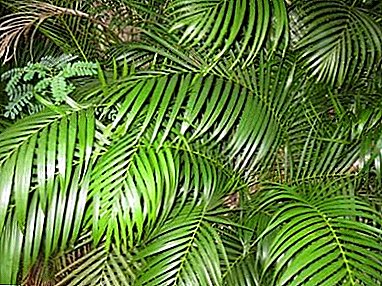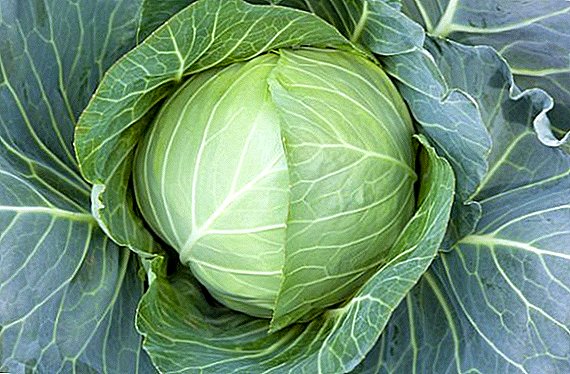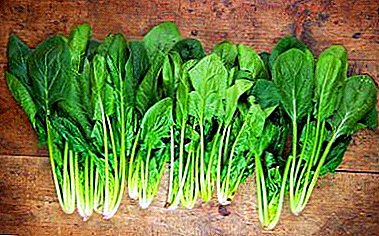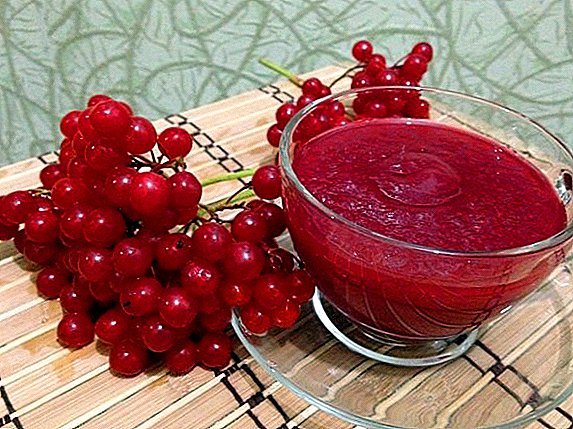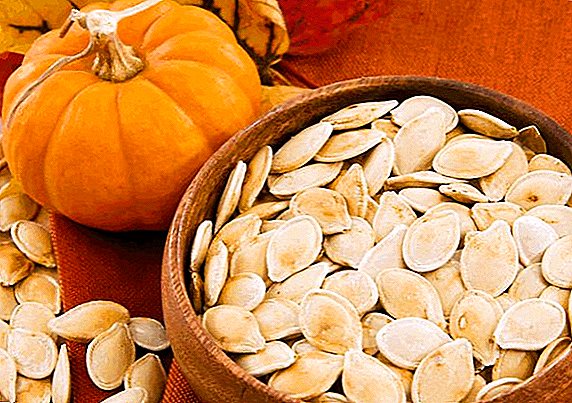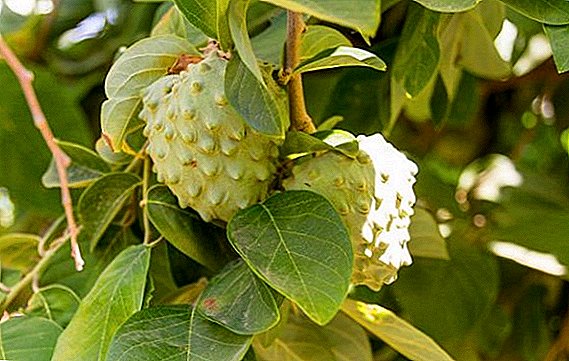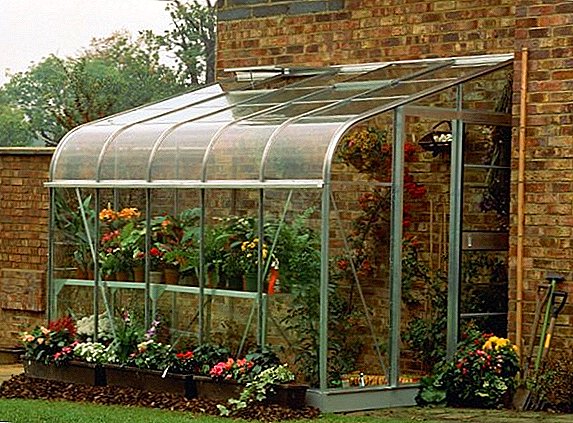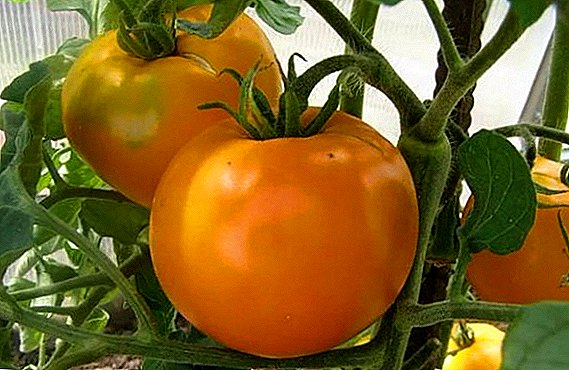 Despite the endless debates of scientists as to what tomatoes belong to: vegetables or fruits, this culture has long occupied an honorable place in our gardens, and ripe juicy fruits have become an integral part of our diet. Continuous selection leads to the fact that the shrub becomes easier to grow, and tomatoes are becoming tastier and more versatile.
Despite the endless debates of scientists as to what tomatoes belong to: vegetables or fruits, this culture has long occupied an honorable place in our gardens, and ripe juicy fruits have become an integral part of our diet. Continuous selection leads to the fact that the shrub becomes easier to grow, and tomatoes are becoming tastier and more versatile.
Among them there are quite exotic representatives who are distinguished by their appearance and taste. Let's take a look at one of the unusual varieties of tomato - "Orange" and consider its description.
Description and photo
Tomato "Orange", according to the description, does not apply to hybrid varieties and, despite the fact that it was bred not long ago (in 2000), managed to earn popularity due to its numerous positive characteristics. Let's look at everything in order.
Bushes
 The plant belongs to the indeterminate, that is, not limited in growth. A tall shrub that reaches a height of up to 1.5 m, branches quite strongly and needs support. The bushes are covered with medium-sized green foliage. The inflorescences are formed over 8-9 leaves, according to the types are divided into simple and intermediate and are formed after 2-3 leaves.
The plant belongs to the indeterminate, that is, not limited in growth. A tall shrub that reaches a height of up to 1.5 m, branches quite strongly and needs support. The bushes are covered with medium-sized green foliage. The inflorescences are formed over 8-9 leaves, according to the types are divided into simple and intermediate and are formed after 2-3 leaves.
The “Black Prince”, “Olesya”, “Babushkino”, “Eagle's Beak”, “Korneevsky Pink”, “Niagara”, “Eagle Heart” are also classified as indeterminate tomato varieties.
Fruit
Tomatoes ripen early enough, already 90-105 days after the appearance of the sprouts. Fruits are round-shaped, bright yellow, often with an orange tinge. On average, tomatoes weigh 180-250 g, but there are also more weighty specimens - 400 g each.  Gastronomic qualities are rated very high, because the fruits are endowed with sweetness, meatiness and juiciness, while the seeds are practically absent. Most often, these tomatoes are used fresh, of which you can make a colorful salad or serve as sliced.
Gastronomic qualities are rated very high, because the fruits are endowed with sweetness, meatiness and juiciness, while the seeds are practically absent. Most often, these tomatoes are used fresh, of which you can make a colorful salad or serve as sliced.
Did you know? Allergies to red vegetables and fruits are becoming more common. The reaction caused by the pigment lycopene, which is found in red colored fruits, creates certain nutritional difficulties for adults and children all over the world. The variety of tomatoes "Orange", in which there is no allergen, is one of those indispensable helpers who saturate the body with useful substances and minerals without causing a negative reaction.
Characteristic variety
Suitable for cultivation in open ground and in greenhouse conditions. Tomato "Orange" is thermophilic and light-requiring, therefore, maximum yield can be achieved in the southern regions or with film growing. From 1 square. m of shrubs when complying with agrotechnics collect 15-20 kg of tomatoes. 
Advantages and disadvantages
The advantages of the variety include:
- Stable good harvest.
- Large-fruited and exotic appearance of tomatoes.
- High gastronomic qualities - tomatoes are very sweet and aromatic.
- The tomato is resistant to phytophthora.
- Compactness in cultivation: due to the height of the bush per 1 square. m can grow more plants.
- Fruits are very useful, they are used to normalize the work of the gastrointestinal tract, used in the diet, as well as with a lack of carotene.
Landing features
In order to get a quality crop, it is necessary to properly prepare the soil and the plant itself for planting. Tomatoes "Orange" can be sown in open ground or in advance to grow seedlings.
Important! Before sowing, the seeds must be calcined at a temperature of +50 °C and cool in ice water, or soak in a 1% solution of potassium permanganate for 20-30 minutes - this will help avoid the occurrence of pests and diseases in the future.
Through seedlings
Seedlings are sown in March, so that in May it can be transplanted into open ground. Drainage is laid out on the bottom of the landing containers, and then covered with substrate. The most suitable soil for shrubs is loamy and sandy, it is good to add organic fertilizer. In order for the seedlings to ascend as soon as possible, the container can be covered with foil and put in a warm, well-lit place.
In order for the seedlings to ascend as soon as possible, the container can be covered with foil and put in a warm, well-lit place.
It is necessary to start diving tomatoes when the plants have 2 leaves each. After 60-65 days, the seedlings are ready for planting in open ground. If by this time the warm weather has not yet settled, it is recommended to cover the seedlings with a film until the weather conditions normalize. The plan of landing on the beds is 70x40 cm.
Direct seeding
Tomato seeds "Orange" can be sown immediately on the garden, around the beginning of May. With this method of planting should not count on an early harvest, as the fruits will ripen a little longer than when grown from seedlings. For landing you need to choose sunny places, protected from wind and drafts. 
Important! Orange tomatoes are best planted after legumes, pumpkin, root or green crops. Compliance with crop rotation - a guarantee of high yields.
Grade Care
Compliance with the rules of agricultural technology is very important when growing any crop. Knowing some of the nuances, you can easily achieve high yields.
Watering
Water the tomatoes as they dry, no more than 2 times a week. For one bush requires 3-4 liters of water. Do not forget that Tomatoes are watered exclusively under the root. In the intervals between water procedures, the soil around the bushes must be weeded and loosened. 
Top dressing
During the growing season, fruiting shrubs need to feed at least 3 times. It is preferable to use organics as fertilizer. A week after planting in open ground, the bushes should be fed with manure, at the rate of 1 kg of fertilizer per 1 liter of water.
The following dressing is carried out during the flowering period of 2-3 fruit brushes, experts also recommend using manure, only add 2-3 g of copper sulfate and potassium permanganate to 10 liters of the mixture. The last time the plant is fertilized during the collection of the first crop with manure dissolved in water (1: 1).
Masking
Tomatoes "Orange" need constant pasynkovanii. Scions pinch as they appear so that they do not rob the plant of vital forces. Most often, the shrub is formed in 1, maximum - 2 stalks. 30 days before the end of the growing season, you should pinch the tops of the shrub and remove small inflorescences.
Did you know? Tomatoes contain an incredible amount of nutrients. Eating them regularly reduces the risk of depression and cancer. Another indisputable advantage of these tasty, juicy fruits is that 100 g of tomatoes contain only 22 kcal.
Diseases and pests
Subject to the rules of farming, tomatoes rarely get sick. The most important thing is to provide support for the bushes and tie them up. This is also necessary to ensure that the plant does not come into contact with the ground, since such a contact can provoke decay, the occurrence of fungal diseases, as well as damage to the foliage and fruit by slugs. The variety is highly resistant to common disease - late blight.  Orange tomatoes are most often consumed raw, as a separate dish or used to make colorful vegetable salads. In this small tomatoes can and canned, in jars, they look very exotic, in fact, as well as fresh. Even a novice gardener will be able to grow such original tomatoes at their summer cottage, and their brilliant taste will not leave indifferent even spoiled gourmets.
Orange tomatoes are most often consumed raw, as a separate dish or used to make colorful vegetable salads. In this small tomatoes can and canned, in jars, they look very exotic, in fact, as well as fresh. Even a novice gardener will be able to grow such original tomatoes at their summer cottage, and their brilliant taste will not leave indifferent even spoiled gourmets.



